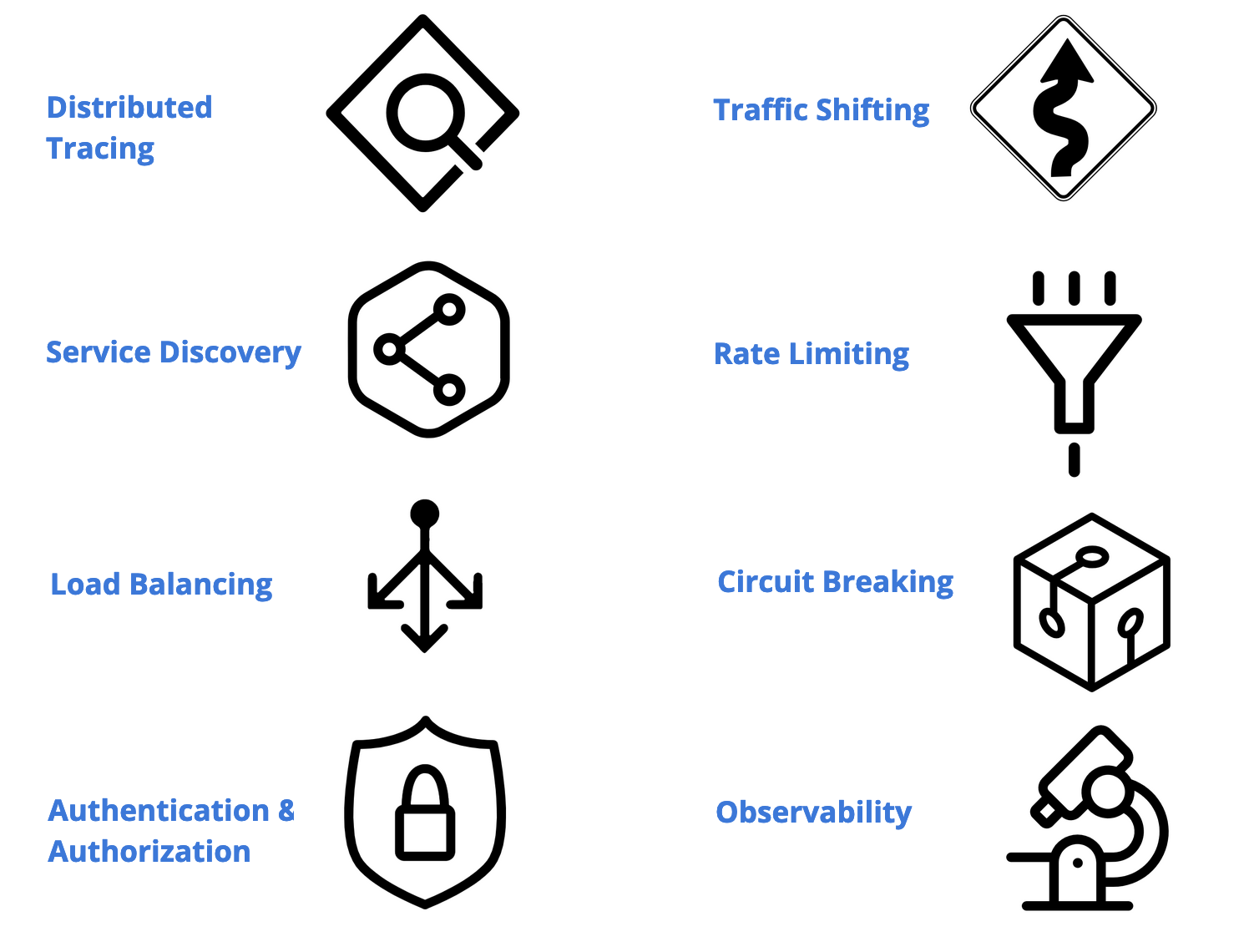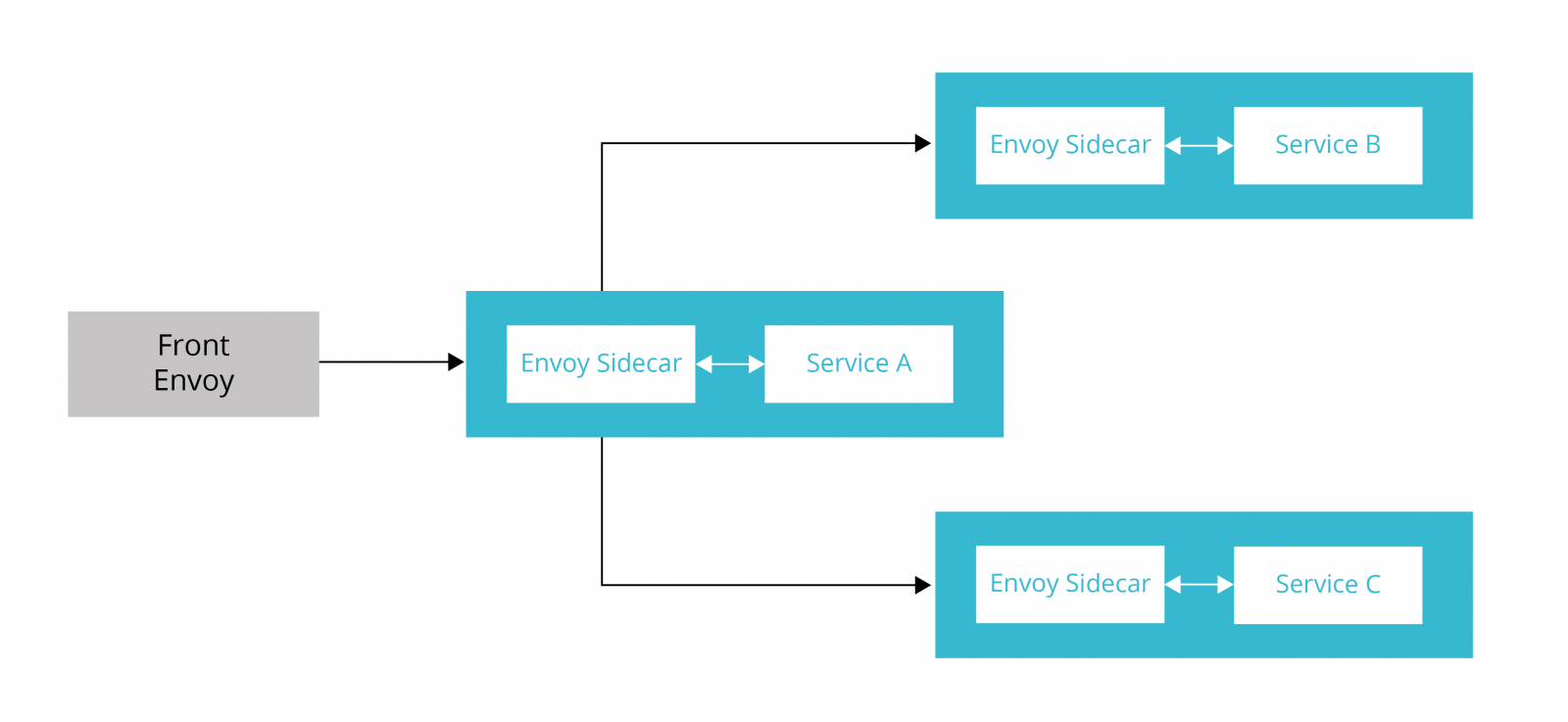Cloud
Kubernetes: an exciting future for developers and infrastructure engineering




 Services setup with sidecar proxies
Services setup with sidecar proxies---
admin:
access_log_path: "/tmp/admin_access.log"
address:
socket_address:
address: "127.0.0.1"
port_value: 9901
static_resources:
listeners:
-
name: "http_listener"
address:
socket_address:
address: "0.0.0.0"
port_value: 80
filter_chains:
filters:
-
name: "envoy.http_connection_manager"
config:
stat_prefix: "ingress"
route_config:
name: "local_route"
virtual_hosts:
-
name: "http-route"
domains:
- "*"
routes:
-
match:
prefix: "/"
route:
cluster: "service_a"
http_filters:
-
name: "envoy.router"
clusters:
-
name: "service_a"
connect_timeout: "0.25s"
type: "strict_dns"
lb_policy: "ROUND_ROBIN"
hosts:
-
socket_address:
address: "service_a_envoy"
port_value: 8786
admin:
access_log_path: "/tmp/admin_access.log"
address:
socket_address:
address: "127.0.0.1"
port_value: 9901
static_resources:
listeners:
-
name: "service-a-svc-http-listener"
address:
socket_address:
address: "0.0.0.0"
port_value: 8786
filter_chains:
-
filters:
-
name: "envoy.http_connection_manager"
config:
stat_prefix: "ingress"
codec_type: "AUTO"
route_config:
name: "service-a-svc-http-route"
virtual_hosts:
-
name: "service-a-svc-http-route"
domains:
- "*"
routes:
-
match:
prefix: "/"
route:
cluster: "service_a"
http_filters:
-
name: "envoy.router"
-
name: "service-b-svc-http-listener"
address:
socket_address:
address: "0.0.0.0"
port_value: 8788
filter_chains:
-
filters:
-
name: "envoy.http_connection_manager"
config:
stat_prefix: "egress"
codec_type: "AUTO"
route_config:
name: "service-b-svc-http-route"
virtual_hosts:
-
name: "service-b-svc-http-route"
domains:
- "*"
routes:
-
match:
prefix: "/"
route:
cluster: "service_b"
http_filters:
-
name: "envoy.router"
-
name: "service-c-svc-http-listener"
address:
socket_address:
address: "0.0.0.0"
port_value: 8791
filter_chains:
-
filters:
-
name: "envoy.http_connection_manager"
config:
stat_prefix: "egress"
codec_type: "AUTO"
route_config:
name: "service-b-svc-http-route"
virtual_hosts:
-
name: "service-b-svc-http-route"
domains:
- "*"
routes:
-
match:
prefix: "/"
route:
cluster: "service_c"
http_filters:
-
name: "envoy.router"
clusters:
-
name: "service_a"
connect_timeout: "0.25s"
type: "strict_dns"
lb_policy: "ROUND_ROBIN"
hosts:
-
socket_address:
address: "service_a"
port_value: 8081
-
name: "service_b"
connect_timeout: "0.25s"
type: "strict_dns"
lb_policy: "ROUND_ROBIN"
hosts:
-
socket_address:
address: "service_b_envoy"
port_value: 8789
-
name: "service_c"
connect_timeout: "0.25s"
type: "strict_dns"
lb_policy: "ROUND_ROBIN"
hosts:
-
socket_address:
address: "service_c_envoy"
port_value: 8790

admin:
access_log_path: "/tmp/admin_access.log"
address:
socket_address:
address: "127.0.0.1"
port_value: 9901
static_resources:
listeners:
-
name: "service-b-svc-http-listener"
address:
socket_address:
address: "0.0.0.0"
port_value: 8789
filter_chains:
-
filters:
-
name: "envoy.http_connection_manager"
config:
stat_prefix: "ingress"
codec_type: "AUTO"
route_config:
name: "service-b-svc-http-route"
virtual_hosts:
-
name: "service-b-svc-http-route"
domains:
- "*"
routes:
-
match:
prefix: "/"
route:
cluster: "service_b"
http_filters:
-
name: "envoy.router"
clusters:
-
name: "service_b"
connect_timeout: "0.25s"
type: "strict_dns"
lb_policy: "ROUND_ROBIN"
hosts:
-
socket_address:
address: "service_b"
port_value: 8082
apiVersion: apps/v1beta1
kind: Deployment
metadata:
name: servicea
spec:
replicas: 2
template:
metadata:
labels:
app: servicea
spec:
containers:
- name: servicea
image: dnivra26/servicea:0.6
ports:
- containerPort: 8081
name: svc-port
protocol: TCP
- name: envoy
image: envoyproxy/envoy:latest
ports:
- containerPort: 9901
protocol: TCP
name: envoy-admin
- containerPort: 8786
protocol: TCP
name: envoy-web
volumeMounts:
- name: envoy-config-volume
mountPath: /etc/envoy-config/
command: ["/usr/local/bin/envoy"]
args: ["-c", "/etc/envoy-config/config.yaml", "--v2-config-only", "-l", "info","--service-cluster","servicea","--service-node","servicea", "--log-format", "[METADATA][%Y-%m-%d %T.%e][%t][%l][%n] %v"]
volumes:
- name: envoy-config-volume
configMap:
name: sidecar-config
items:
- key: envoy-config
path: config.yaml
Disclaimer: The statements and opinions expressed in this article are those of the author(s) and do not necessarily reflect the positions of Thoughtworks.
